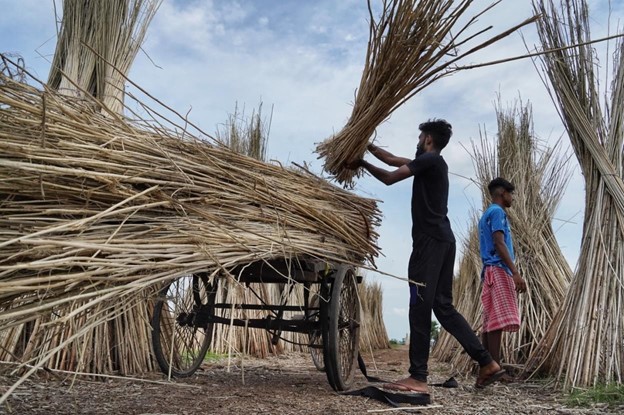Success of Microinsurance in India- Key Factors
Microinsurance is an important tool to protect the lives and livelihoods of
low-income
populations in developing countries. Especially in a country like India,
where a considerable
percentage of the population falls under low-income groups, Microinsurance
is a boon.
Microinsurance scheme offers much-needed protection against unforeseen
losses thereby
securing the lives and livelihood of those who are most vulnerable.
Although the Microinsurance sector has been growing rapidly in India and all
over the world.
But the industry is still at a nascent stage considering its low insurance
penetration percentage.
According to a report India’s broader insurance market in 2019-20,
Microinsurance accounts for less than 1.8% (for life) and 1.16% (for general
insurance that
includes illness, accident, property damage, unemployment, natural
disasters, etc.)

Microinsurance in India
In India, the Insurance Regulatory and Development Authority of India (IRDAI)
created Special
regulations for Microinsurance policies in 2005. These regulations (which are
amended from
time to time) define and enable the Microinsurance business in India.
Today India represents one of the largest and most dynamic markets for
microinsurance in the
world. Liberalization of the economy and the insurance sector has created new
opportunities to
reach a wider set of target populations including the Economically vulnerable
and those working
in the informal sector.
What makes Microinsurance different from Traditional
insurance
Microinsurance products offer limited protection to the low-income group at a
very low cost.
Given their low cost, these products are characterized by small margins and high
volume. These
Key features make it very different from traditional insurance where margins are
high.
The success and sustainability of the business depend on keeping the transaction
cost low.
The industry faces many challenges slowing down the growth and outreach of
microinsurance in
India including the lack of awareness and financial literacy, absence of
need-based products,
slow claims processes, and procedures. The costs of marketing and processing
appear to be too
high and, given the extremely low purchasing power of the consumer base, it
cannot be easily
apportioned to the target group.

Key factors contributing to the success of
Microinsurance in India
Given the specific nature of the Microinsurance industry, here are some of the
key measures to
tackle the challenges faced by the industry and contribute towards the success
of Microinsurance
in India.
1. Need-Based Products:
“One size doesn’t fit all” in the same way, standard policies may not
suit the specific requirements of the low-income population. To increase the
reach and
acceptance of Microinsurance products, especially in rural areas, it's necessary
to design
customized products catering to the specific needs of the community or the
group. Credit-life and
funeral (burial) products are reportedly the most common types of
microinsurance. The products
must be easy to understand and simple in execution.
2. Simple and Quick Processing:
To be able to scale the business, it’s important to build
credibility among a population that is not familiar with insurance. This comes
from a simplified
process along with immediate policy issuance and claim settlement. Many in rural
areas do not
have access to the right documentation, hence it’s important to develop
processes that support
immediate issuance and claim settlement without the cumbersome documentation.
Simple and
quick processes can ease the barrier and build more trust amongst the end-users.
3. Innovative distribution models:
Innovative distribution models can help cut down the cost
and time required to reach a wider audience, especially in rural areas.
Microinsurance can be
delivered through the partner-agent, full-service, community-based including a
partnership with
local NGOs and MFIs and provider-driven models to the target users. Further use
of mobile
technology and end-to-end digital experience will ensure transparency and faster
availability.
4.Use of technology to Minimize the cost and increase
efficiency:
Technology can help in minimizing the operational cost by automating the
repetitive processes. It can help in enrolling
more clients and faster claim settlements through digital channels. The mobile
channels can
further support client acquisition and business growth.
With all these measures, Microinsurance can reach the right audience at the same
time ensuring
sustainability and profitability for the insurers. With Microinsurance, everyone
can win and build
a financially secured and healthy society.

About MicroNsure
MicroNsure is a technology led Microinsurance consulting and distribution
company. We are
committed to bringing financial inclusion to the economically vulnerable section
of our society
by offering simple, hassle-free, and affordable microinsurance solutions.
To know more about our services and products do write to us at
madhulika@micronsure.com
Disclaimer
Insurance is offered by Svojas Insurance Broking and Risk Management Services
Private
Limited (CIN U67120TG2017PTC118828).
IRDAI Broking License Code No. DB 718/17, Certificate No. 627, License category-
Direct
Broker (Life & General), valid till 09/11/2023.
Insurance is the subject matter of the solicitation. Product information is
solely based on the
information received from the insurers. For more details on risk factors,
associated terms and
conditions, and exclusions, please read the sales brochure carefully of the
respective insurer
before concluding a sale.
For more information on Svojas Insurance Brokers visit
www.svojasinsurancebrokers.com


















